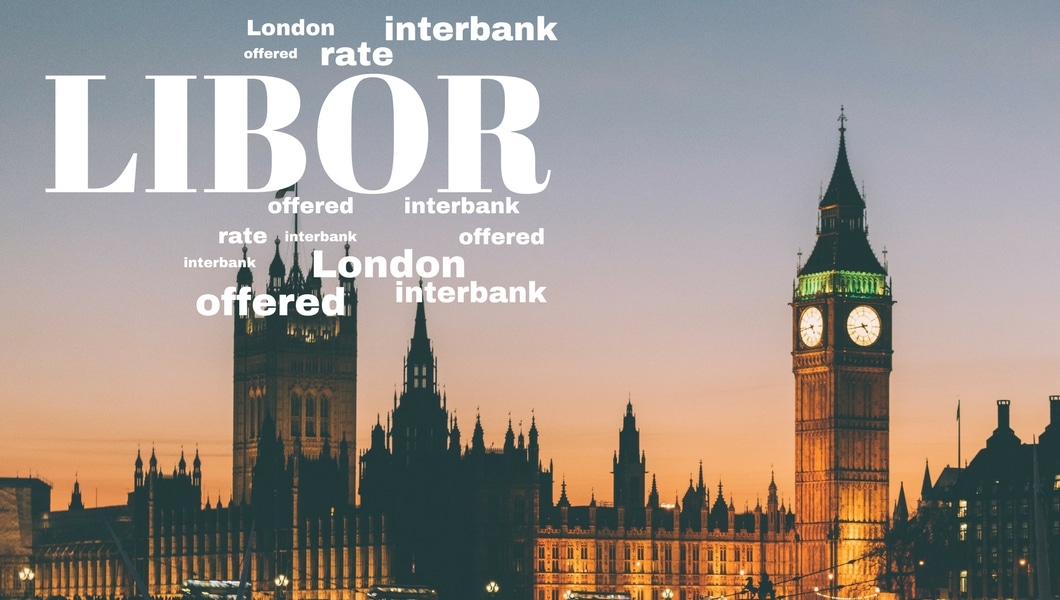The London Interbank Offered Rate, or LIBOR, is the most common benchmark interest rate index used to make adjustments to variable-rate loans and credit cards. World banks use LIBOR when charging each other for short-term loans.
LIBOR is based on five currencies:
- U.S. dollar (USD)
- Euro (EUR)
- Pound sterling (GBP)
- Japanese yen (JPY)
- Swiss franc (CHF)
What Is London Interbank Offered Rate (LIBOR)?
LIBOR will phase out by June 30, 2023, according to the Federal Reserve and UK regulators.
After December 31, 2021, LIBOR one-week and two-month USD LIBOR rates will no longer be published as part of this phase-out.
Understanding LIBOR
LIBOR stands for London Interbank Offered Rate, which is the average interest rate at which major worldwide banks lend to one another. Each business day, 35 separate LIBOR rates calculate and present due to the combination of five currencies and seven maturities.
ICE polls major worldwide banks every day to find out how much they would charge other banks for short-term borrowing.
The association subtracts the top and lowest numbers before calculating the average of the remaining figures.
The rade updates every morning as the daily rate, therefore it is not a constant.
Once the rates for each term and currency have been calculated and finalized, the ICE Benchmark Administration announces and publishes them once a day around 11:55 a.m. London time (IBA).
LIBOR is also a benchmark for consumer loans in many nations throughout the world. Therefore it has an impact on consumers as well as financial institutions.
The interbank rate affects the interest rates on various credit products such as credit cards, vehicle loans, and adjustable-rate mortgages.
This fluctuation in the rate helps determine the ease with which banks and customers can borrow money.
However, there are drawbacks to adopting the LIBOR rate. Lower borrowing costs may appeal to customers, but they have an impact on the returns on some securities. Because some mutual funds are linked to LIBOR, their yields may fall as LIBOR changes.
How Is LIBOR Calculated?
For each currency and tenor pair, the IBA has assembled a panel of worldwide banks.
The panel for US dollar LIBOR, for example, consists of 16 large banks, including Bank of America, Barclays, Citibank, Deutsche Bank, JPMorgan Chase, and UBS.
Only banks with a significant role in the London market are eligible for membership on the ICE LIBOR panel.
The IBA has proposed a fresh proposal to enhance the LIBOR calculating process as of April 2018.
The Waterfall Methodology, a standardized, transaction-based, data-driven, tiered technique for determining LIBOR, was suggested.
Uses of LIBOR
LIBOR is used worldwide in a wide variety of financial products. They include the following:
- Standard interbank products like the forward rate agreements (FRA), interest rate swaps, interest rate futures, options, and swaptions, whereby options provide buyers with the right, but not the obligation, to purchase a security or interest rate product
- Commercial products like floating rate certificate of deposits and notes, variable rate mortgages, and syndicated loans, which are loans offered by a group of lenders
- Hybrid products like collateralized debt obligations (CDO), collateralized mortgage obligations (CMO), and a wide variety of accrual notes, callable notes, and perpetual notes
- Consumer loan-related products like individual mortgages and student loans
LIBOR is also a standard indicator of market expectations for central bank interest rates.
It is a measure of the liquidity premiums for various money market instruments. As well as an indicator of the overall health of the banking system. LIBOR is used to construct, launch, and trade a variety of derivative instruments.
Other conventional operations such as clearing, price discovery, and product valuation use LIBOR as a reference rate.
Though LIBOR is widely regarded, there are other regional interest rates that are widely tracked around the world.
Examples of LIBOR-Based Products and Transactions
A variable rate bond, for example, is a LIBOR-based transaction that pays an annual interest rate based on LIBOR, say at LIBOR + 0.5 percent. The interest payment will fluctuate as the LIBOR rate fluctuates.
Interest rate swaps—contractual arrangements between two parties to exchange interest payments at a specific time—are also referred to as LIBOR.
Assume Paul has a $1 million investment that pays him a quarterly variable LIBOR-based interest rate of LIBOR + 1%.
He wishes to move to fixed-rate interest payments because his profits are subject to LIBOR values and are fluctuating in nature.
Peter, on the other hand, has a $1 million investment that pays him a fixed interest rate of 1.5 percent per quarter.
He wants a variable income because it will allow him to receive greater payouts on occasion.
Peter will pay Paul the fixed 1.5 percent interest on his $1 million investment. Which is $15,000, while Paul would pay Peter LIBOR + 1 percent variable interest.
If LIBOR is 1%, Peter will earn 2% of LIBOR, or $20,000, from Paul.
Peter will receive $5,000 ($20,000 – $15,000) from Paul in net terms because this sum is more than what he owes to Paul. If LIBOR falls to 0.25 percent before the end of the quarter, Peter will be eligible for 1.25 percent, or $12,500, from Paul. Paul will receive $2,500 ($15,000 – $12,500) from Peter on a net basis.
Such swaps effectively meet the needs of both parties involved in the transaction who wished to modify the type of interest receipts (fixed and floating).

